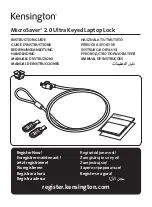
153
If Something Goes Wrong
Memory problems
5
To view the properties, double-click the device.
The operating system displays the Device Properties dialog
box, which provides an array of tabs. They may include:
❖
The General tab, which provides basic information about
the device.
❖
The Resource tab, which lists resources assigned to
the monitor, optional external optical drive, and other
power-using functions. This tab does not appear if the
device is not using resources.
❖
The Driver tab, which displays the drivers being used by
the device.
The tabs that appear in the dialog box vary from one device to
another. A Troubleshooting button is also present.
6
Click Troubleshoot...
A Help and Support window for that device appears.
For more information about Device Manager, refer to Windows
®
online Help.
Memory problems
Incorrectly connected or faulty memory modules may cause errors
that seem to be hardware or even software related. It is worthwhile
checking for these first:
1
Click Start, Turn off computer.
2
Click Turn Off.
The operating system shuts down and turns off the computer
automatically.
3
Remove the memory module, following the instructions in
“Removing a memory module” on page 47
.
4
Reinstall the memory module, following the instructions in
“Installing a memory module” on page 42
, and making sure the
module is seated properly.
5
Check for the error again.
6
If the error recurs, remove the memory module entirely and
check for the error again.
If removing the memory module eliminates the error, the
memory module may be faulty. If the error recurs without the
memory module installed, the error is not caused by the
memory module.
















































